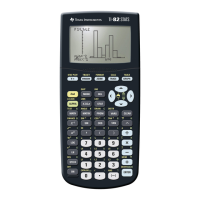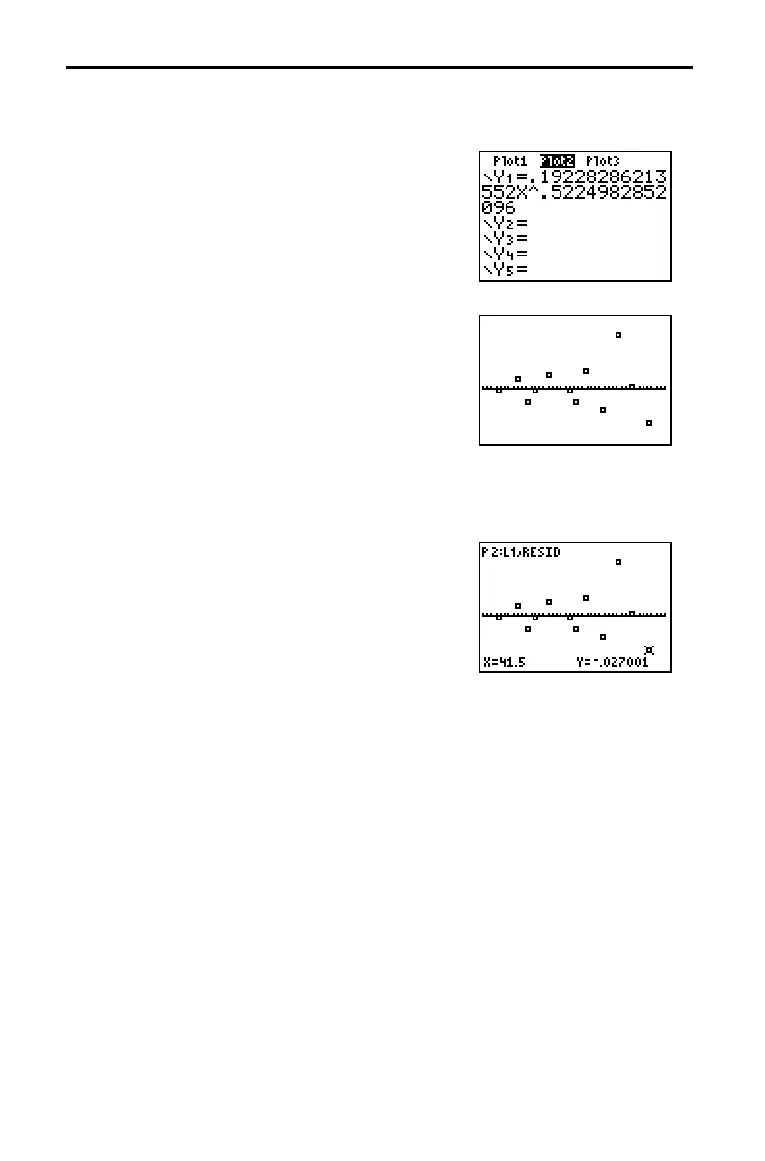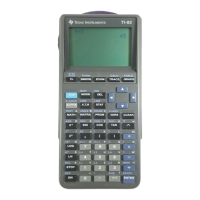12–8 Statistics
82D315~1.DOC TI-83 international English Bob Fedorisko Revised: 10/26/05 1:36 PM Printed: 10/27/05 2:53
PM Page 8 of 38
The new function y=.192x
.522
appears to fit the data well. To get more information,
examine a residual plot.
27. Press o to display the
Y= editor.
Press | Í to deselect Y1.
Press } Í to turn off plot 1. Press ~
Í to turn on plot 2.
Note: Step 19 defined plot 2 to plot residuals ( RESID)
versus string length (L1).
28. Press q 9 to select 9:ZoomStat from the
ZOOM menu. The window variables are
adjusted automatically, and plot 2 is
displayed. This is a scatter plot of the
residuals.
The new residual plot shows that the residuals are random in sign, with the residuals
increasing in magnitude as the string length increases.
To see the magnitudes of the residuals, continue with these steps.
29. Press r.
Press ~ and | to trace the data. Observe
the values for
Y at each point.
With this model, the largest positive residual
is about 0.041 and the smallest negative
residual is about L0.027. All other residuals
are less than 0.02 in magnitude.
Getting Started: Pendulum Lengths and Periods (cont.)

